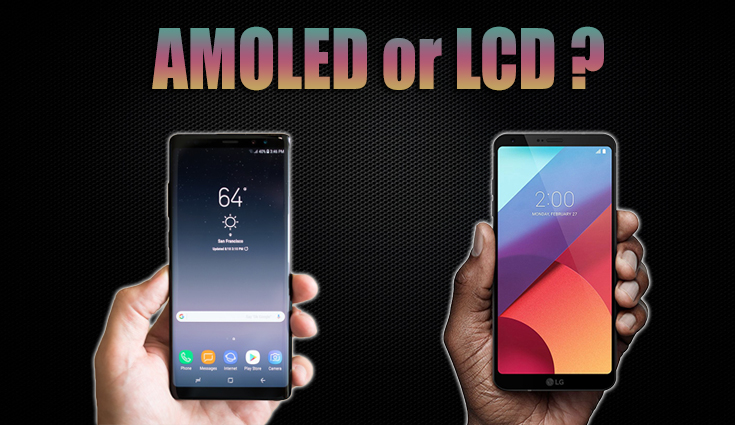Large smartphone * manufacturers present new devices every month . The companies always provide the new smartphones with the latest technology. Terms such as LCD screen or AMOLED display are often heard, among other things. Apple * calls its own screen technology Retina. With such a large number of terms, the overview can quickly be lost. Therefore, the terms and differences are explained in more detail below.
Table of Contents
Contents
The screen resolution: HD, Full HD, QHD, 4K
When buying a smartphone, the screen resolution is elementary. This reflects the number of pixels in height and width (for example: 1,920 x 1,080 pixels). Resolution standards have been established in recent years:
- Full High Definition (Full HD): 1,920 x 1,080 pixels
- High Definition (HD): 1,280 x 720 pixels
- Quad High Definition (QHD, WQHD or 2K): 2,560 x 1,440 pixels
The Ultra High Definition (4K) resolution is again divided into two categories:
- 4K2K: 4,096 x 2,160 pixels
- Quad Full High Definition (QFHD): 3,840 x 2,160 pixels
The Xperia Z5 Premium from Sony is equipped with a 4K display (as one of the first devices on the market). For films and images, it achieves a maximum resolution of 3,840 x 2,160 pixels. Otherwise, it resolves in Full HD.
The pixel density
The pixel density is crucial for the sharpness of the display. The specification ppi (pixel per inch) shows the number of pixels over the length of an inch. When purchasing, the ppi value should always be observed. For example, a 7-inch tablet can resolve with Full HD, with a pixel density of 315 ppi. In contrast, the pixel density of a 5-inch smartphone with the same resolution can be 440 ppi. In comparison, the smartphone * is sharper.
The different types of displays
The LCD display:
The individual pixels of the liquid crystal display (LCD) consist of liquid crystals that do not glow themselves. Only the background is illuminated. The light shines through the individual pixels. The display is either completely illuminated or completely switched off.
A pixel consists of a red, green and blue sub-pixel. Overall, LCD displays achieve a higher maximum brightness. Another advantage is that the color display looks natural.
The retina display:
The Retina display can only be found in Apple * products. Behind it is an LCD display with IPS technology. The term retina stands for the human retina of the eye. By choosing the name, Apple * would like to point out that the resolution of the display is very high, so that the human eye no longer recognizes individual pixels. In comparison, current Android * smartphones have a much sharper resolution. The IPS technology reduces the viewing angle dependence of the contrast in which the pixels are partially rotated.
The AMOLED display:
The active-matrix organic light-emitting diode display (AMOLED display) does not require any background lighting, as self-illuminating diodes are used. Each pixel is controlled individually. A lot of electricity can be saved in dark and black displays. For example, technologies such as Motorola’s Active Notifications and Samsung’s Quick Check use this property. With the technologies mentioned, only the pixels that are really needed are activated.
The pixels of the AMOLED display are made up of red, green and blue subpixels. Various Samsung * smartphones, however, differ from this scheme. In this context, the sub-pixels are arranged according to the PenTile matrix. This uses the RGBG scheme (red-green-blue-green). This enables a higher resolution to be achieved more cheaply. They are also more energy efficient. Compared to the LC displays, these are considered to be less clear.
Advantages and disadvantages of LCD and AMOLED displays:
AMOLED displays achieve high saturation and contrast. They are also known for deep black levels and good viewing angle stability. Compared to LCDS, they can be made flatter. Only with OLED technology can flexible and curved screens be produced.
LCDs achieve higher brightness and are less expensive. In addition, the durability of LCD is higher.
Super AMOLED display:
Similar to Apple, Samsung * uses its own marketing term. Most Super AMOLED displays use a traditional RGB scheme (red, green and blue).
IPS:
Most current smartphones that have an LCD are equipped with IPS technology. In-plane switching (IPS) improves viewing angle stability. As a result, the display can be viewed from different angles without colors, contrasts and brightness changing visibly. Notebook screens are rarely provided with this technology; Apple uses this technology for smartphones
Conclusion
What a customer has to look out for when buying a new smartphone depends on the respective application. For example, if you read a lot with your smartphone *, you need to search for a high-resolution device. The pixel density should not be less than 300 ppi, as the font could appear blurred. This could lead to rapid eye fatigue.
